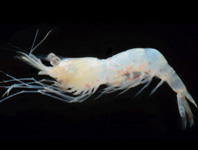Abstract
Seoda cavernicola sp. nov. and Psychoda glamocensis sp. nov., are new species and cave dwellers from Bosnia and Hercegovina, and Croatia. Adults of S. cavernicola are pale and small; the eye bridge is reduced, ommatidia irregularly arranged, epandrium with a pair of setose excrescences. The eye bridge of P. glamocensis is likewise reduced with 2 or 3 irregularly ordered facet rows, palpus segments of some individuals are malformed; its closest relative is Psychoda alticola Vaillant based on the morphology of male and female genitalia as well as on COI barcodes.
References
Bravo, F., Chagas C. & Alves, V.R. (2008) Description of two new species of Tonnoira Enderlein from caves in the Brazilian Amazon and comments about the taxonomic status of Tonnoira plumaria Quate (Diptera, Psychodidae, Psychodinae). Zootaxa, 1916 (1), 63–68.
https://doi.org/10.11646/zootaxa.1916.1.4
Bravo, F. & Barata, R.A. (2012a) A new species of Nemapalpus Macquart (Diptera, Psychodidae, Bruchomyiinae) from caverns in Minas Gerais State in southeastern Brazil. Zootaxa, 3164 (1), 64–68.
https://doi.org/10.11646/zootaxa.3164.1.7
Bravo, F. & Barata, R.A. (2012b) A new species of Bruchomyia (Diptera: Psychodidae) from caverns in the state of Minas Gerais, Brazil. Zoologia, 29 (5), 455–458.
https://doi.org/10.1590/S1984-46702012000500009
Khadri Shahar, M, Abu Hassan, A., Lee, H.L. & Che Salmah, M.R. (2011) Studies of Phlebotomine Sand fly (Diptera: Psychodidae) populations in limestone areas and caves of western Malaysia. The Southeast Asian Journal of Tropical Medicine and Public Health, 42 (1), 83–93.
Kvifte, G.M. & Andersen, T. (2012) Moth flies (Diptera, Psychodidae) from Finnmark, northern Norway. Norwegian Journal of Entomology, 59, 108–119.
Kvifte, G.M. & Wagner, R. (2017) 24. Psychodidae (Sand flies, Moth flies or Owl flies). In: Kirk-Spriggs, A.H. & Sinclair, B.J. (Eds.), Manual of Afrotropical Diptera vol 2, Nematocerous Diptera and lower Brachycera. Suricata 5. South African National Biodiversity, Institute, Pretoria, pp. 607–632.
Polseela, R., Vitta, A., Nateeworanart, S. & Apiwathnasorn, C. (2011) Distribution of cave-dwelling Phlebotomine sand flies and their nocturnal and diurnal activity in Phitsanulok province, Thailand. The Southeast Asian Journal of Tropical Medicine and Public Health, 42 (6), 1395–1404.
Quate, L.W. (1962) The Psychodidae of Batu Caves, Malaya (Diptera). Pacific Insects, 4 (1), 219–234.
Quate, L.W. (2000) A new species of Psychoda (Diptera: Psychodidae) from caves in Georgia. Florida Entomologist, 83 (1), 56–58.
https://doi.org/10.2307/3496228
Sarà, M. (1950) Su Psychoda severini severini Tonn. (Dipt. Psychodidae) nuova per l’Italia e sulla sua larva, rinvenute in ambiente cavernicolo. Annuario dell’Istitutut e Museo di Zoologia della Università di Napoli, 2 (3), 1–4.
Sarà, M. (1962) Rinvenimento di Psychoda minuta Banks nuova per l’Italia, in una grota dela Sicilia e considerazioni sui Psicodidi cavernicoli (Dipt.). Bolletino delle sedute dell’ Accademia Gioenia di Scienze naturali in Catania, Serie IV, 7 (2), 68–73.
Sket, B. (2016) Subterranean (Hypogean) Habitats in the Karst and their Fauna. In. Finlayson, C., Milton, G., Prentice, R. & Davidson, N. (Eds.), The Wetland Book. Springer Science & Business Media, Dordrecht, pp. 1–14.
https://doi.org/10.1007/978-94-007-6173-5_241-1
Vaillant, F. (1966) Notes sur les Psychodidae des grottes. Lucrarile Institutului de Speologie Emil Racovita, 5, 91–8.


